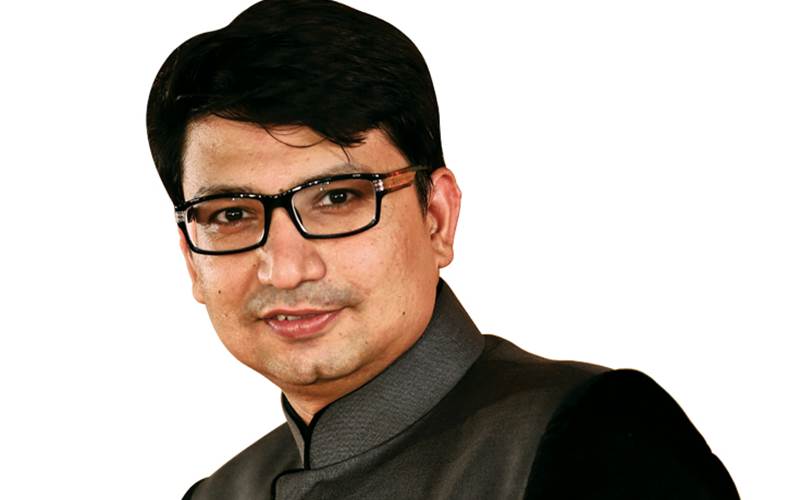Hiren Karia: The argumentative Indian paper dealer
India’s share in world production is 3.7% with 15-million tpa, says Hiren Karia. He argues in favour of the 10,000 paper traders in India
24 Dec 2019 | By PrintWeek Team
First and foremost, the big picture. The Indian paper industry has a market size of more than 17 million tonnes of paper and is growing at 7% per annum. The annual turnover of the paper industry is estimated to be Rs 60,000 crore, with Rs 4,500 crore contribution to the exchequer. The industry provides direct employment to 0.5-million persons, and indirectly to 1.5-million.
Again, with the period under consideration, the top 15 paper manufacturers who are IPMA members, produced 3,828,415 tonnes of paper, out of total production 3,368,994 tonnes sold in domestic market. The export figure was 4,48,980 tonnes. According to the report, the reasons for growth of the paper industry in the country are continuous demand for education and literacy, increasing organised retail, growth in ecommerce, FMCG, pharma/healthcare sector, demand of quality packaging, ban on plastic (especially polythene bags), increase in demand of eco-friendly paper bags, continuously increasing demand of ready-to-eat food and printed stationery.
Amongst them, newsprint has 2.585 million tonnes of market share and growing at 2.06%; writing and printing paper (uncoated + coated) has 5.065 million tonnes of market share and is growing at 4.86% per annum; packaging paper/ paperboard (kraft paper/ paperboard and duplex paperboard) has 8.710-million tonnes market share and growing at 8.37%; tissue paper has 0.165-million tonnes and growing at 17.75%; mg variety/poster has 0.239-million tonnes of market share and growing at 2% and other paper/paperboard has 0.355-million tonnes market share and growing at 10.75% per annum.
Under the baseline scenario, by 2024-25, domestic consumption is projected to rise to 23.5-million tpa and production to 22.0-million tpa. About one million tpa of integrated pulp, paper and paperboard capacity is required to be created in India on an annual basis over the current capacity to meet the growing demand.
If investments are not made, the growing demand will be met through imports.
The paper trader and the role
In India there are more than 10,000 paper traders. Each of them play a role in the paper supply chain. They act as distributors, stockist, financers, Tax collectors and transporters. It’s difficult to imagine the current paper trade without a paper trader. The paper industry has gone through a lot of changes in the last 30 years. From being a seller-dominated market it has become a buyer’s dominated market. Today, a majority of our traders are working with a GP margin of 2 to 3%. These are not healthy margins considering the high risk of unsecured credit we give.
Today technology is playing a key role across all industries; traditional methods of doing business are getting replaced by new methods driven by technology. Take a look at Ola, Uber, Bookmyshow, Swiggy, Amazon, Makemytrip and innumerable technology-driven businesses. Just by making good use of technology they have become disruptive in their own fields plus modified the way traditional business are done.
As paper traders we need to adopt technology and make our business cost-effective. With the implementation of GST, India has become a single market. It’s easy to trade across India now. Imagine if some trader can develop an app, which would have all his stock inventory and material availability details. He needs to ask his client to download the app and place the order from his inventory. The client can also track his order delivery status online rather than calling and making enquiries. The trade would be much easier, as well as efficient. The advantage of using technology is we can collect data about what size and GSM sells more during which period, what type of paper stocks generate enquiries, etc. Accordingly, we can maintain or manage our stocks. In many developed countries there are a few merchants controlling the majority of paper trade.
This shall be applicable to the Indian market, too, in a few years’ time.
I feel, the paper trader who shall adopt and change with the times will survive.
A successful trader should ...
- Observe the change and implement things
- Be willing to listen and learn from customers
- Should be open to ideas, even if the ideas make him uncomfortable
- Give freedom to the young generation to share their new ideas regarding the business and try and implement it with proper risk analysis
- Realise success is dependent on the leadership he provides to his organisation
- To be truly successful, a paper trader must be a facilitator, a catalyst, inspire, have conviction, add value, and dispense hope
Today, the question is whether the classic law of demand and supply holds firm in the 21st century?
No.
Tomorrow’s customers will be different from today’s.
Tomorrow’s products will be different from today’s.
Tomorrow’s markets will be different from today’s
Tomorrow’s strategies will be different from today’s.
Paper traders must remember that knowledge is the key to greatness. Indians worship Saraswati, the Goddess of Knowledge, as part of the Indian culture. Also, we worship the Goddess of Wealth, Laxmi. In the 21st century the paper trader is both a distributor of knowledge, Saraswati, and a creator of wealth, Laxmi. Happy Festival Season!












 See All
See All